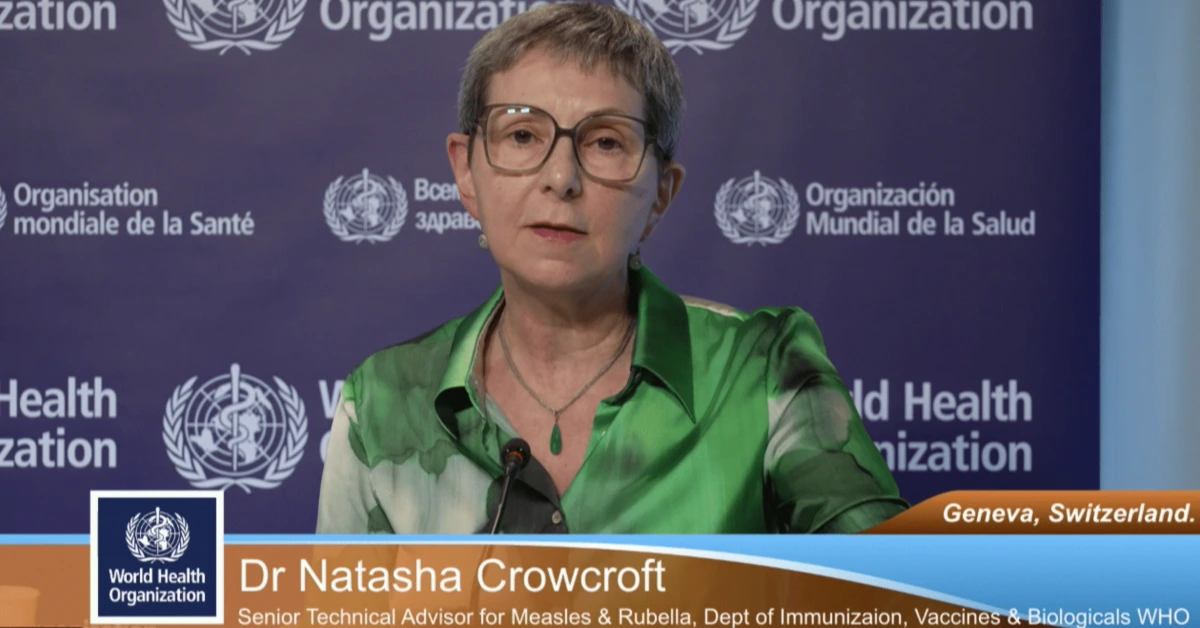
SWITZERLAND – A report from the World Health Organization (WHO) highlights a worrying increase in global measles cases, driven largely by insufficient vaccination coverage.
In 2023, an estimated 10.3 million measles cases were reported worldwide—a 20% jump from the previous year, with most cases affecting children who were not fully vaccinated.
The global death toll also remains concerning. Nearly 107,500 people died from measles in 2023, with children under five years old being especially vulnerable.
“This slight reduction in deaths was mainly because the surge in cases occurred in countries and regions where children with measles are less likely to die due to better nutritional status and access to health services,” explained Dr. Christine Dubray, CDC Measles Elimination Team Lead.
However, measles remains a major risk for unvaccinated populations, particularly in regions facing high malnutrition rates, poor healthcare access, and conflict.
Europe and Africa face alarming outbreaks
The surge in measles cases was especially severe in Europe and Africa. Europe experienced a staggering 200% increase in cases, from 100,000 in 2022 to over 300,000 in 2023.
Meanwhile, Africa saw over 4.5 million cases, accounting for 71% of global measles deaths. “In the African region, the number of deaths increased by 37%,” said Dr. Natasha Crowcroft, WHO’s senior technical advisor on measles.
She attributed the high mortality in these regions to poor nutrition, limited healthcare access, and high rates of vaccine-preventable illness among vulnerable communities.
Decline in vaccination coverage
The WHO and CDC warn that measles outbreaks will likely continue unless vaccination rates improve significantly.
“Vaccine hesitancy plays a part in all regions of the world, so we know that’s in there somewhere,” noted Crowcroft.
Despite global efforts, the measles vaccination rate has remained below the target of 95% for at least three years, leaving many children unprotected against one of the world’s most contagious viruses.
An estimated 96% of this year’s measles cases occurred in children who were not fully vaccinated.
The COVID-19 pandemic worsened the situation, with millions of children missing routine vaccinations.
“The number of children receiving the first dose of the measles vaccine worldwide declined to 81% during the COVID-19 pandemic,” reported WHO. This is the lowest global coverage rate since 2008.
To prevent measles outbreaks, the CDC recommends that children receive two doses of the measles vaccine.
The first dose is given between 12 and 15 months of age, with a second dose between ages four and six.
The WHO and CDC are advocating for improved surveillance and rapid identification of cases to prevent further spread.
As founding members of the Measles & Rubella Partnership (M&RP), the WHO and CDC are part of a global initiative dedicated to eliminating measles and rubella.
Both organizations urge countries to strengthen their healthcare infrastructure and community outreach to improve vaccine coverage and reduce outbreaks.
XRP HEALTHCARE L.L.C | License Number: 2312867.01 | Dubai | © Copyright 2025 | All Rights Reserved